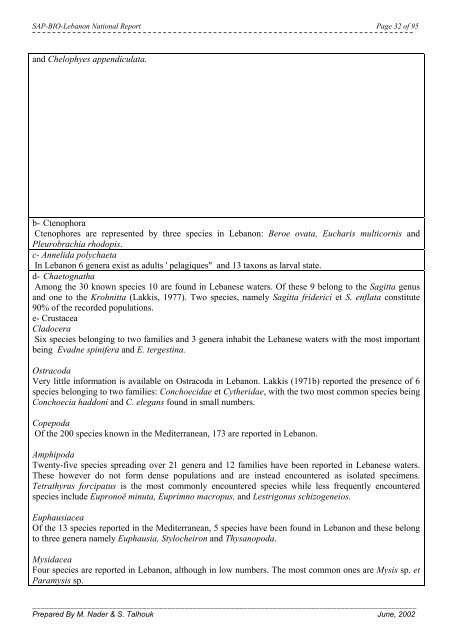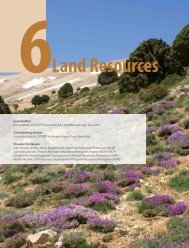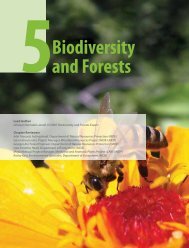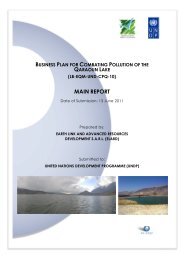Project for the preparation of a Strategic Action Plan for the ...
Project for the preparation of a Strategic Action Plan for the ...
Project for the preparation of a Strategic Action Plan for the ...
You also want an ePaper? Increase the reach of your titles
YUMPU automatically turns print PDFs into web optimized ePapers that Google loves.
SAP-BIO-Lebanon National Report Page 32 <strong>of</strong> 95<br />
¯¯¯¯¯¯¯¯¯¯¯¯¯¯¯¯¯¯¯¯¯¯¯¯¯¯¯¯¯¯¯¯¯¯¯¯¯¯¯¯¯¯¯¯¯¯¯¯¯¯¯¯¯¯¯¯¯¯¯¯¯¯¯¯¯¯¯¯¯¯¯¯¯¯¯¯<br />
and Chelophyes appendiculata.<br />
b- Ctenophora<br />
Ctenophores are represented by three species in Lebanon: Beroe ovata, Eucharis multicornis and<br />
Pleurobrachia rhodopis.<br />
c- Annelida polychaeta<br />
In Lebanon 6 genera exist as adults ' pelagiques" and 13 taxons as larval state.<br />
d- Chaetognatha<br />
Among <strong>the</strong> 30 known species 10 are found in Lebanese waters. Of <strong>the</strong>se 9 belong to <strong>the</strong> Sagitta genus<br />
and one to <strong>the</strong> Krohnitta (Lakkis, 1977). Two species, namely Sagitta friderici et S. enflata constitute<br />
90% <strong>of</strong> <strong>the</strong> recorded populations.<br />
e- Crustacea<br />
Cladocera<br />
Six species belonging to two families and 3 genera inhabit <strong>the</strong> Lebanese waters with <strong>the</strong> most important<br />
being Evadne spinifera and E. tergestina.<br />
Ostracoda<br />
Very little in<strong>for</strong>mation is available on Ostracoda in Lebanon. Lakkis (1971b) reported <strong>the</strong> presence <strong>of</strong> 6<br />
species belonging to two families: Conchoecidae et Cy<strong>the</strong>ridae, with <strong>the</strong> two most common species being<br />
Conchoecia haddoni and C. elegans found in small numbers.<br />
Copepoda<br />
Of <strong>the</strong> 200 species known in <strong>the</strong> Mediterranean, 173 are reported in Lebanon.<br />
Amphipoda<br />
Twenty-five species spreading over 21 genera and 12 families have been reported in Lebanese waters.<br />
These however do not <strong>for</strong>m dense populations and are instead encountered as isolated specimens.<br />
Tetrathyrus <strong>for</strong>cipatus is <strong>the</strong> most commonly encountered species while less frequently encountered<br />
species include Eupronoë minuta, Euprimno macropus, and Lestrigonus schizogeneios.<br />
Euphausiacea<br />
Of <strong>the</strong> 13 species reported in <strong>the</strong> Mediterranean, 5 species have been found in Lebanon and <strong>the</strong>se belong<br />
to three genera namely Euphausia, Stylocheiron and Thysanopoda.<br />
Mysidacea<br />
Four species are reported in Lebanon, although in low numbers. The most common ones are Mysis sp. et<br />
Paramysis sp.<br />
___________________________________________________________________________________________<br />
Prepared By M. Nader & S. Talhouk June, 2002





